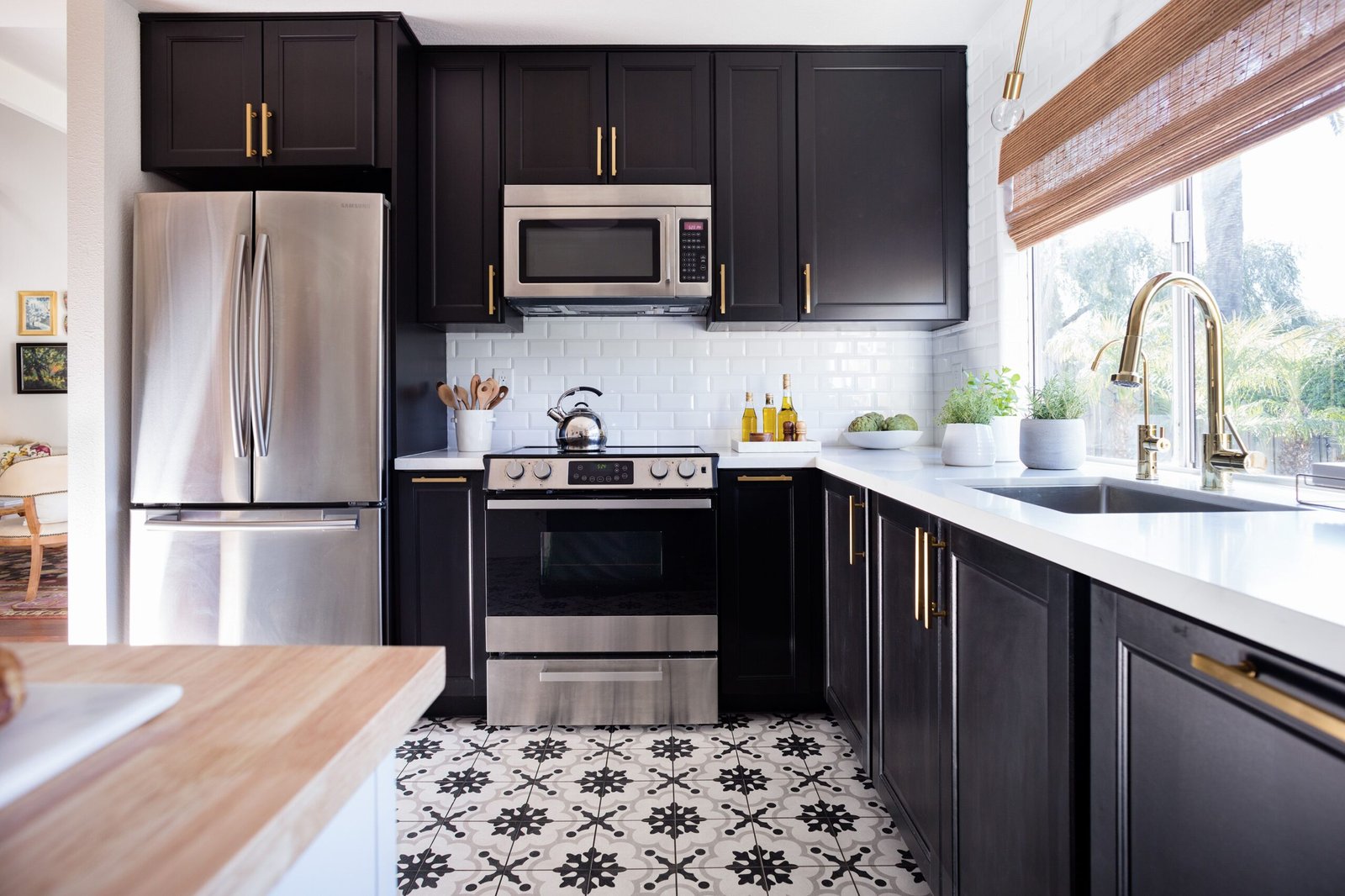Practical Considerations: White Cabinets Black Backsplash

The juxtaposition of white cabinets and a black backsplash presents a striking visual contrast, but necessitates careful consideration of practical aspects to ensure longevity and aesthetic appeal. This section details the maintenance requirements, lighting impact, and design suitability for various kitchen spaces.
Maintenance Requirements
White cabinets and black backsplashes require different cleaning approaches due to their contrasting properties. White cabinets, while visually appealing, readily show dirt and smudges. Regular cleaning with a damp microfiber cloth and a mild dish soap solution is recommended. Stubborn stains may necessitate the use of a non-abrasive cleaner specifically designed for painted surfaces. Avoid harsh chemicals or abrasive scrubbers which can damage the finish. Black backsplashes, conversely, tend to mask dirt and smudges more effectively. However, fingerprints and grease splatters can still accumulate, particularly near the stovetop. Cleaning can involve using a slightly damp cloth with a gentle all-purpose cleaner, followed by thorough drying to prevent water spots. For particularly greasy areas, a degreasing agent may be necessary. Regular wiping down after cooking minimizes the build-up of grime.
Lighting Impact
Lighting significantly influences the perception of white cabinets and a black backsplash. Bright, overhead lighting can highlight the stark contrast, creating a dramatic effect, particularly suitable for modern or minimalist kitchens. Recessed lighting strategically placed above cabinets can accentuate their clean lines and minimize shadows. Under-cabinet lighting, on the other hand, can illuminate the countertop and backsplash area, minimizing the potential for a dark, oppressive feel, especially in smaller kitchens. Warm-toned lighting can soften the stark contrast, creating a more inviting atmosphere. Cool-toned lighting, conversely, accentuates the modern and sleek feel. In contrast, ambient lighting, such as pendant lights or chandeliers, can add a touch of elegance and warmth, balancing the stark contrast between the black and white elements.
Design Suitability for Various Kitchen Sizes
The combination of white cabinets and a black backsplash offers design flexibility across various kitchen sizes and layouts. In small kitchens, the contrast can create an illusion of spaciousness by drawing the eye upward. Using lighter colored countertops and flooring can further enhance this effect. For instance, a small galley kitchen could benefit from this scheme, as the white cabinets visually expand the space, while the black backsplash adds a sophisticated touch without overwhelming the room. However, in extremely small kitchens, the dark backsplash might make the space feel cramped if not properly balanced with sufficient lighting and lighter color elements elsewhere. Conversely, in large kitchens, the combination can provide a sophisticated and balanced look. A large island with a black countertop can complement the backsplash, while white cabinets maintain a sense of openness. The ample space allows for a more dramatic contrast without feeling cramped. A large kitchen with a bay window could leverage natural light to accentuate the design, while strategically placed task lighting can highlight specific areas.
Alternative Design Approaches

The classic white cabinets and black backsplash combination offers a timeless elegance, but exploring alternative design approaches can yield equally striking and unique results. Diversifying materials and spatial arrangements allows for personalized kitchen aesthetics, catering to various tastes and architectural styles. This section explores alternative backsplash materials and kitchen layouts that maintain the desired contrast while introducing new textures and spatial dynamics.
Alternative Backsplash Materials, White cabinets black backsplash
Several materials offer a similar high-contrast effect to black backsplashes against white cabinets, but with varied textures and visual appeal. Careful consideration of material properties, such as durability, maintenance requirements, and cost, is crucial for informed decision-making.
- Black Stone: Materials like black granite, soapstone, or slate provide a sophisticated, natural look. Granite offers durability and resistance to heat and stains, but can be expensive. Soapstone is softer and requires regular oiling but develops a beautiful patina over time. Slate offers a more rustic, textured appearance. The pros include durability and visual richness; cons include higher cost and potential maintenance needs (sealing for granite, oiling for soapstone).
- Dark Wood Paneling: Vertical or horizontal dark wood paneling creates a warm, inviting atmosphere, offering a unique textural contrast to the sleekness of white cabinets. The choice of wood type influences the overall aesthetic; walnut or ebony offer deep, rich tones. Pros include warmth, texture, and a unique design element; cons include potential susceptibility to moisture damage and higher maintenance compared to tile.
- Metallic Tiles: Black metallic tiles, such as those with a brushed steel, copper, or brass finish, introduce a modern, industrial aesthetic. These tiles can be highly reflective, adding depth and visual interest. Pros include modern aesthetic, durability, and ease of cleaning; cons include potential for showing fingerprints and scratches, and higher cost than some other options.
Kitchen Layouts with Black Accent Walls
Instead of a full backsplash, strategically placed black accent walls can create a dramatic focal point and visually distinct zones within the kitchen. The placement of the accent wall significantly impacts the room’s flow and aesthetic.
- Layout 1: Accent Wall Behind Range: A black accent wall positioned behind the range draws the eye to the cooking area, creating a visually striking backdrop. This layout is effective in open-plan kitchens, defining the kitchen space while maintaining visual connection with adjacent areas. The impact is a dramatic focal point emphasizing the cooking area.
- Layout 2: Accent Wall as a Dining Area Divider: In kitchens with a combined dining area, a black accent wall can act as a stylish partition, subtly separating the two zones without completely closing them off. This creates distinct areas for cooking and dining, while the black wall adds a touch of sophistication. The impact is a visually defined dining space within a larger area.
- Layout 3: Accent Wall as a Feature Wall in an Island Kitchen: For kitchens with an island, a black accent wall behind the island creates a dramatic backdrop, enhancing the island’s prominence. This layout is particularly effective in larger kitchens, where the island serves as a central gathering point. The impact is a sophisticated and eye-catching island feature.
